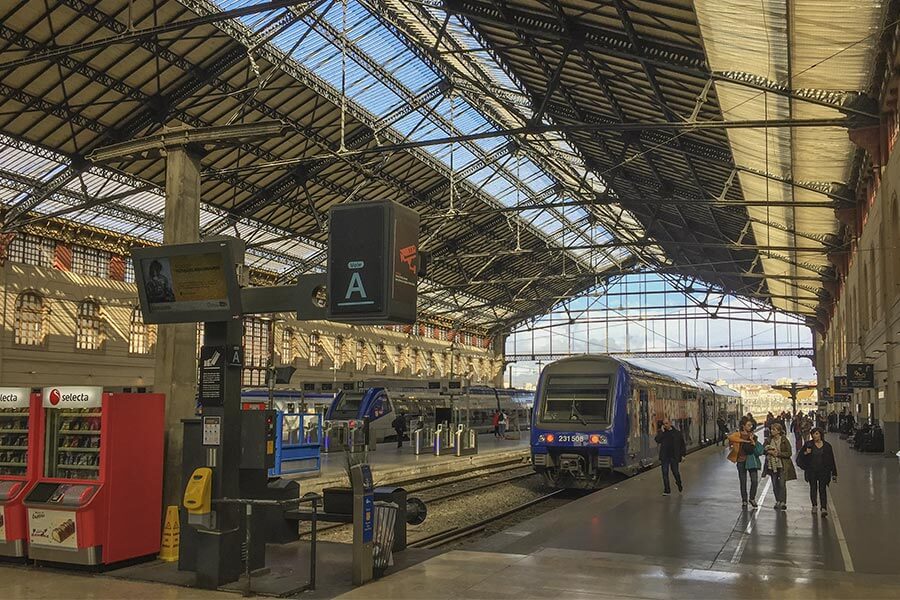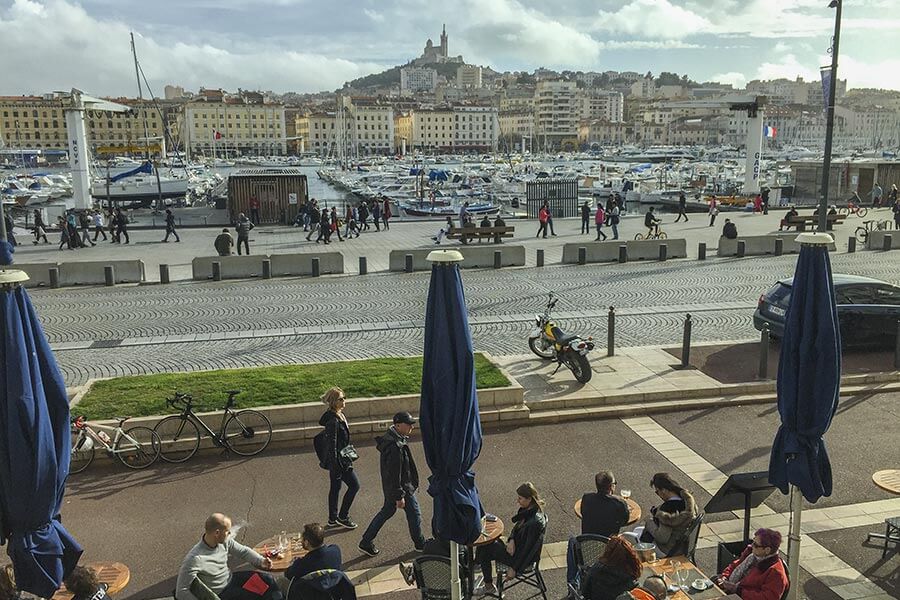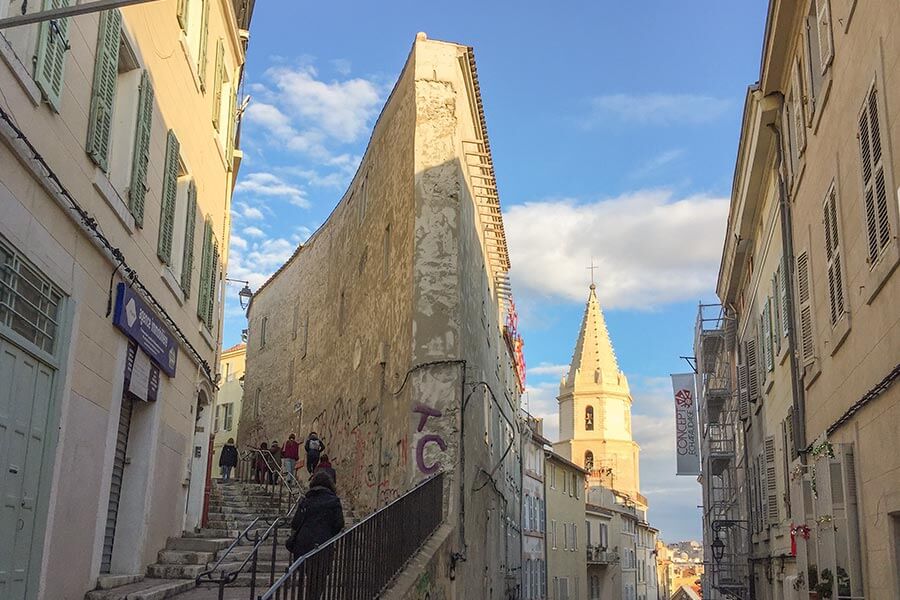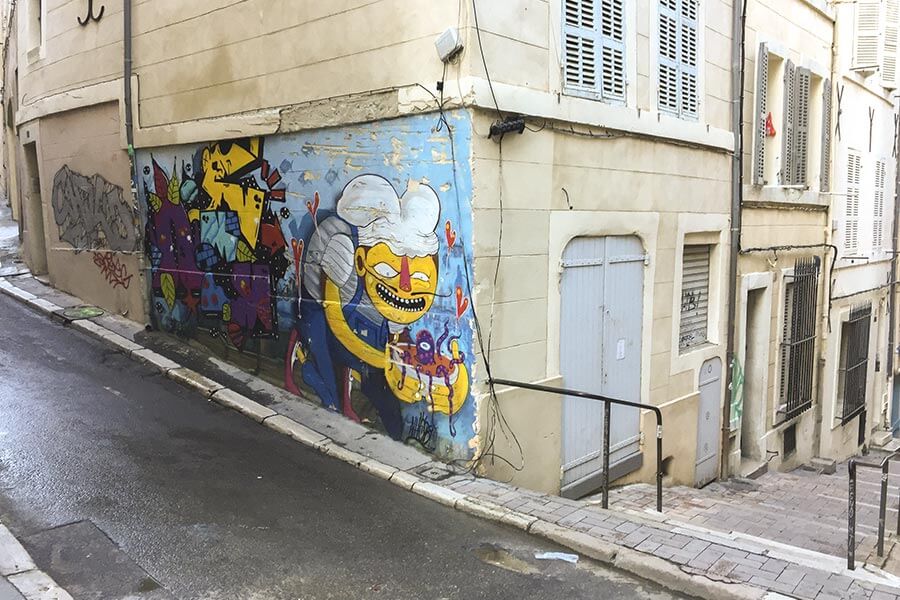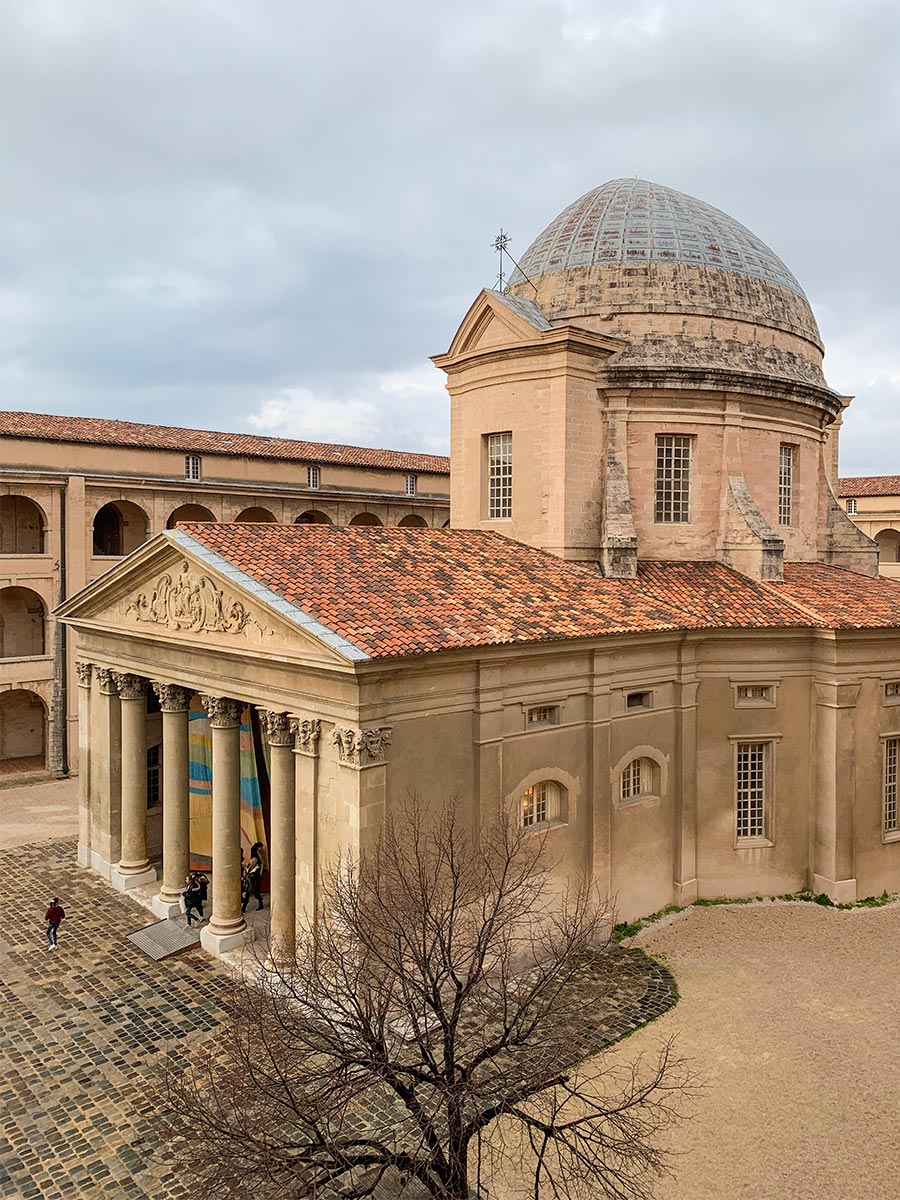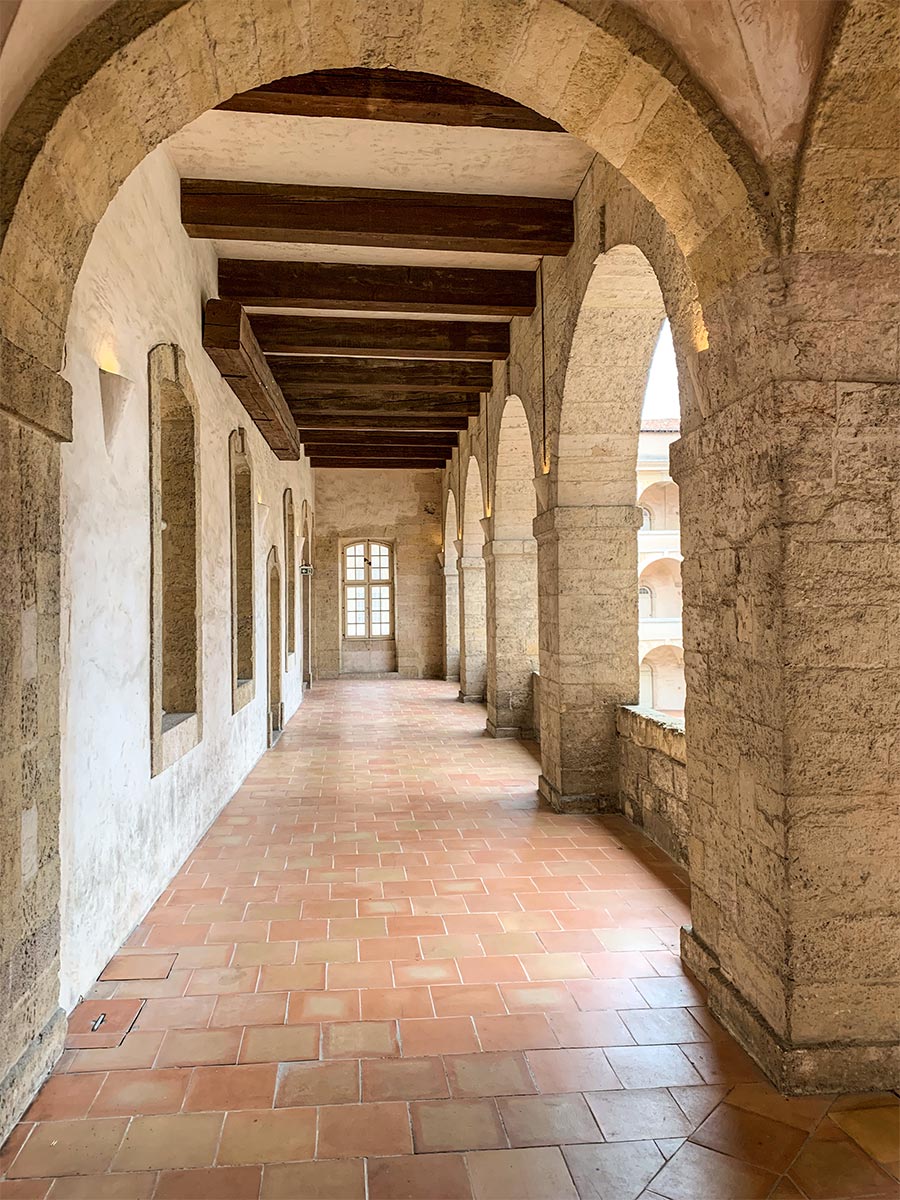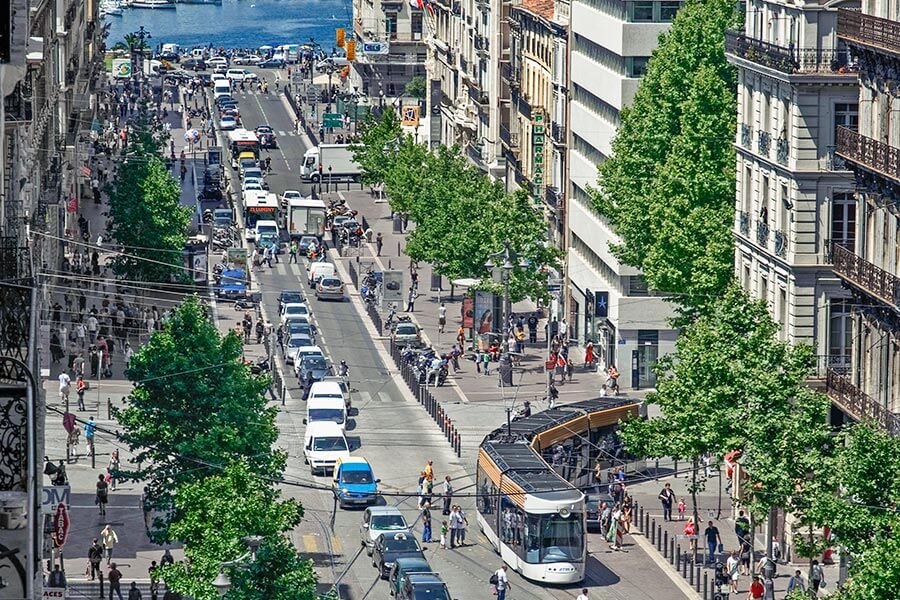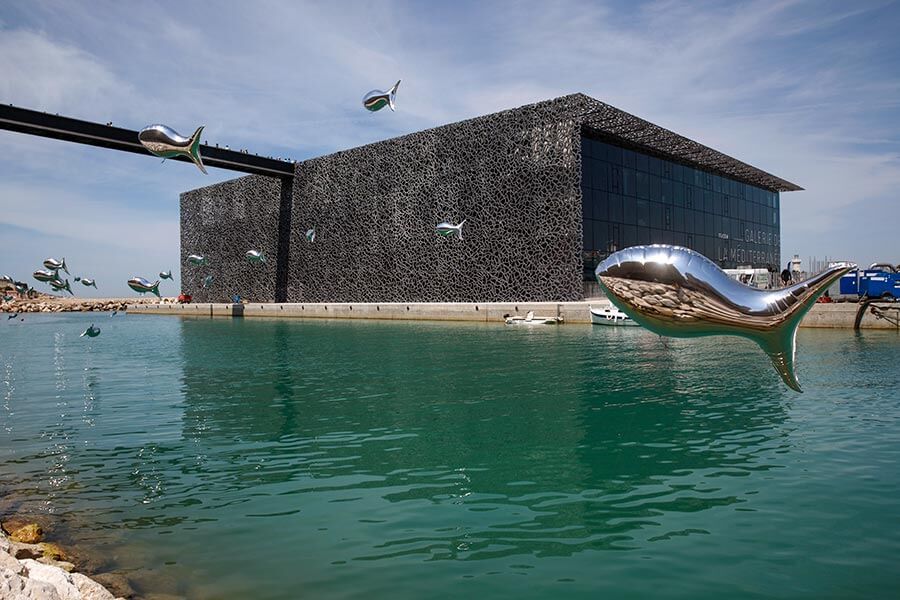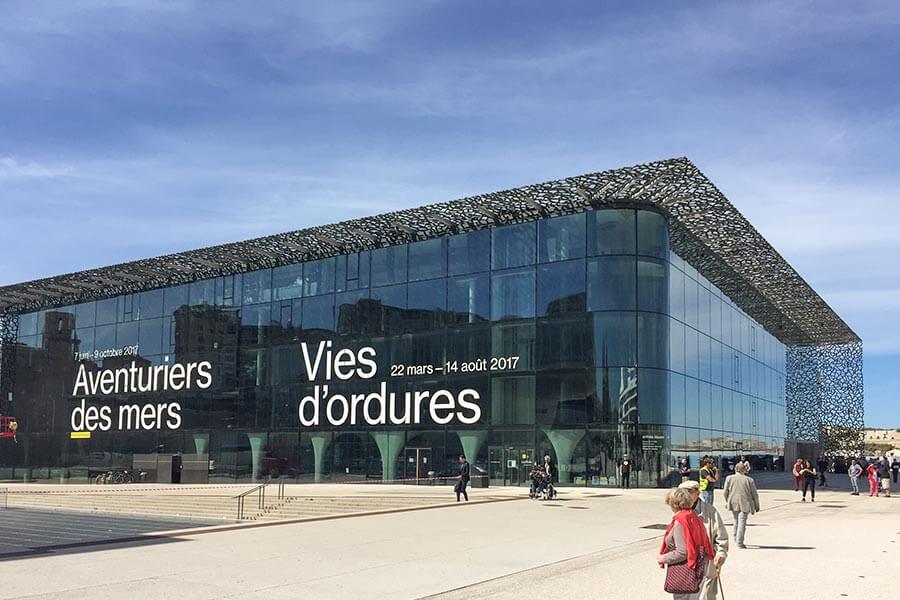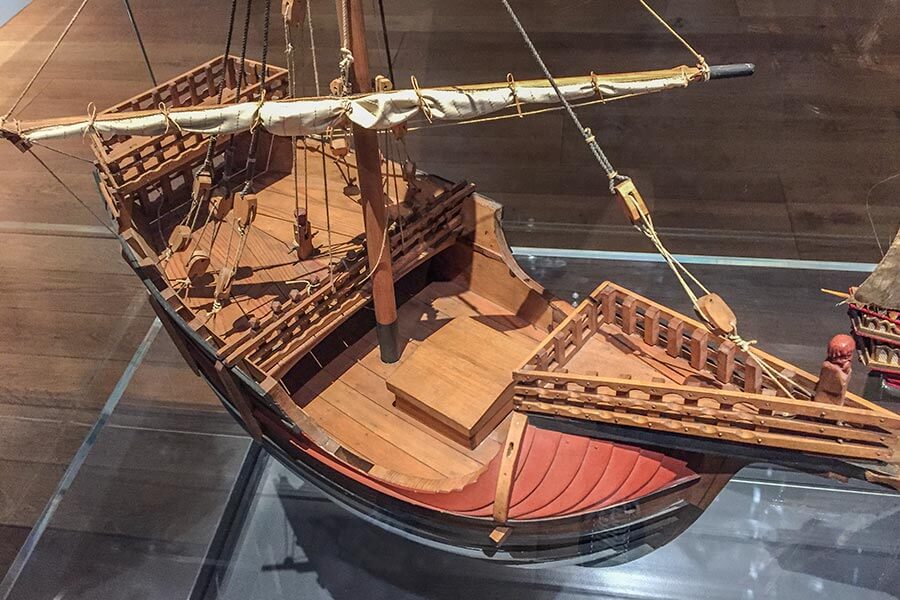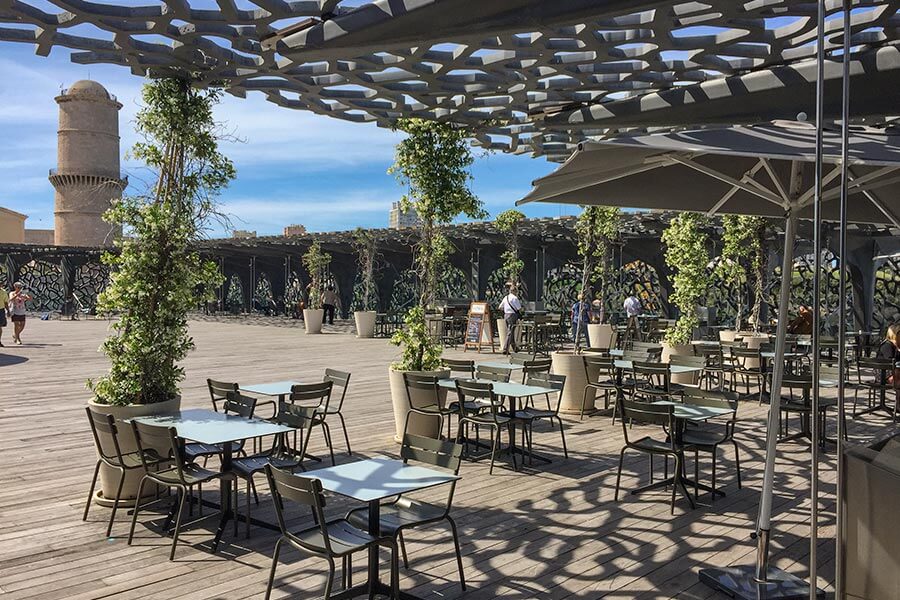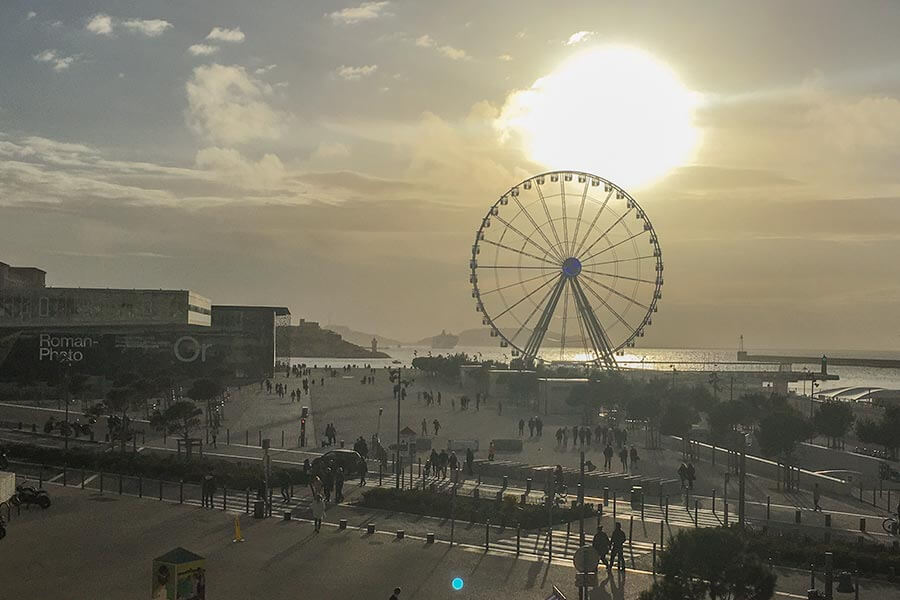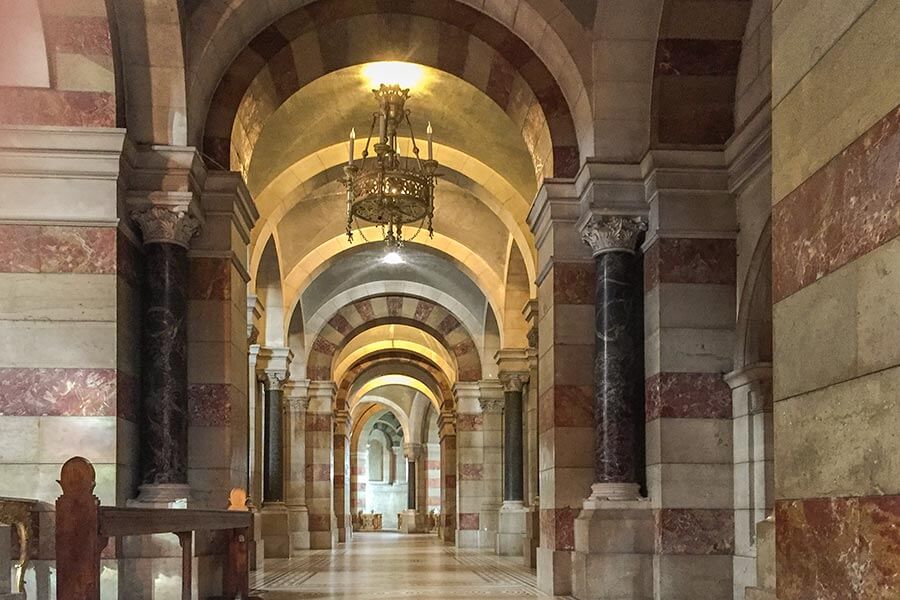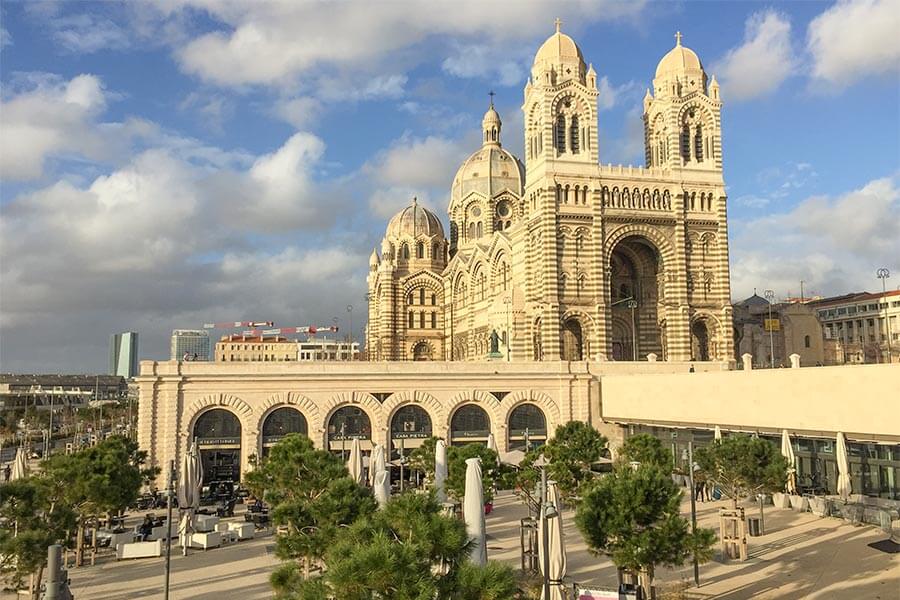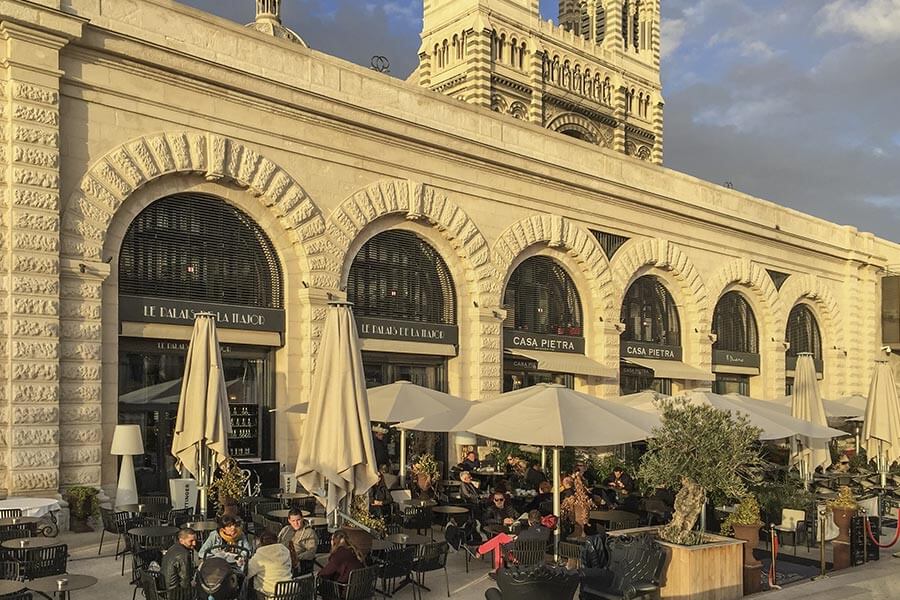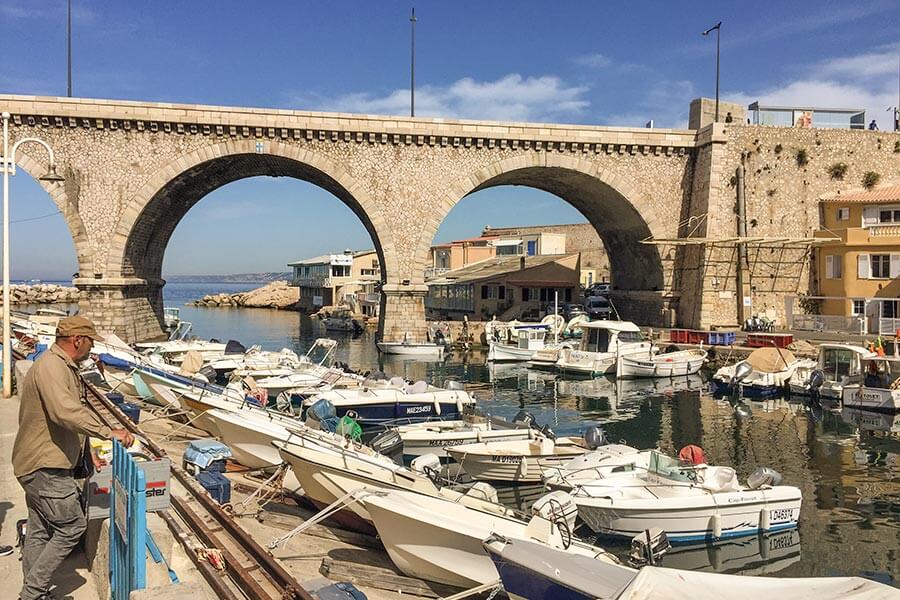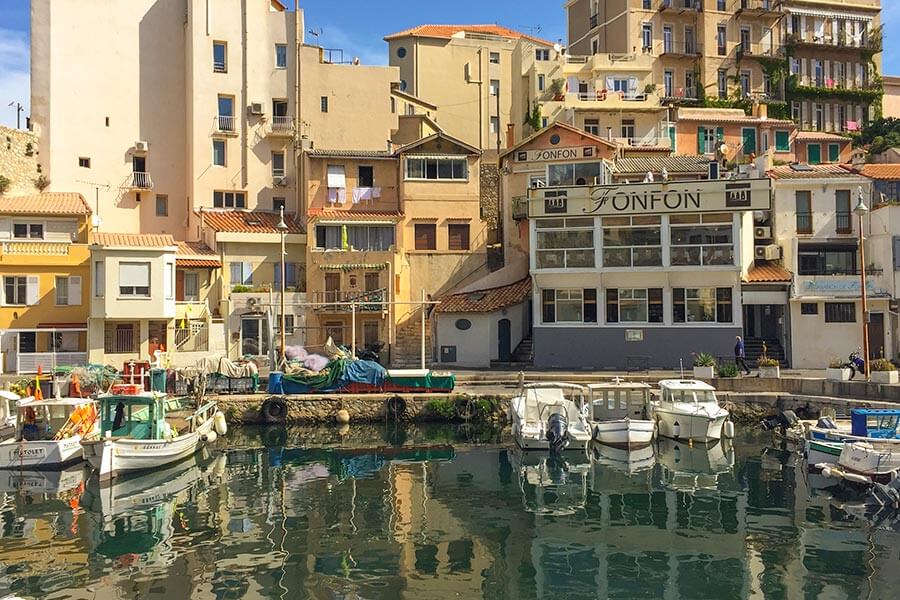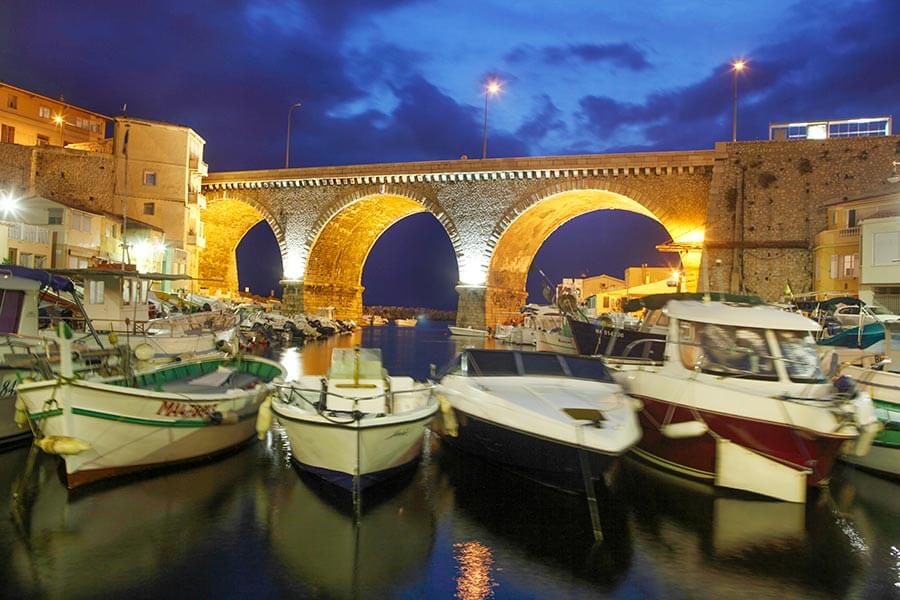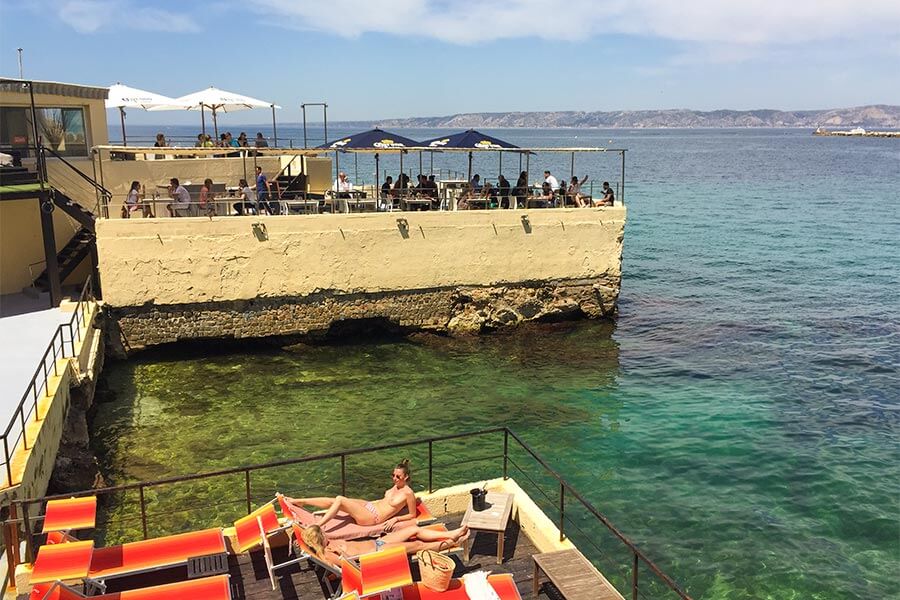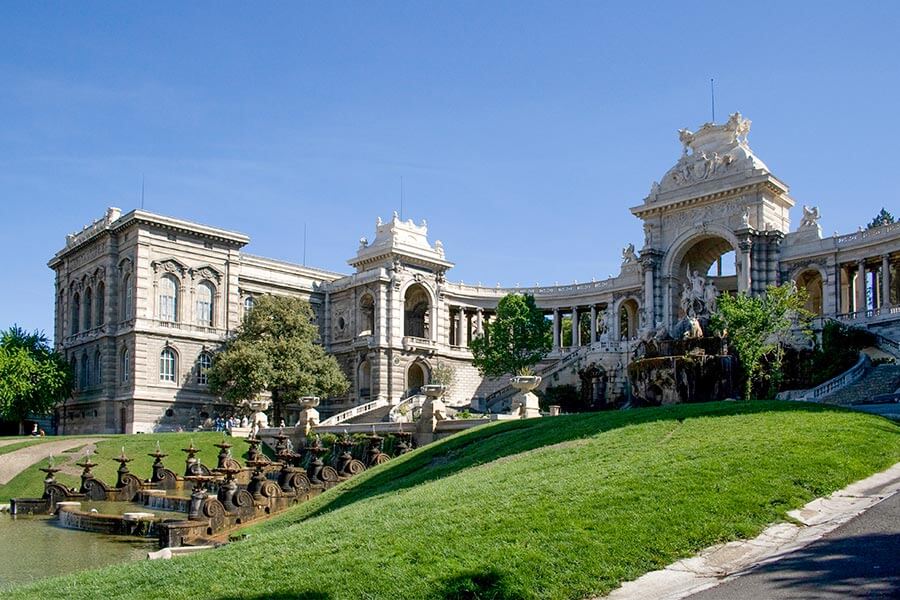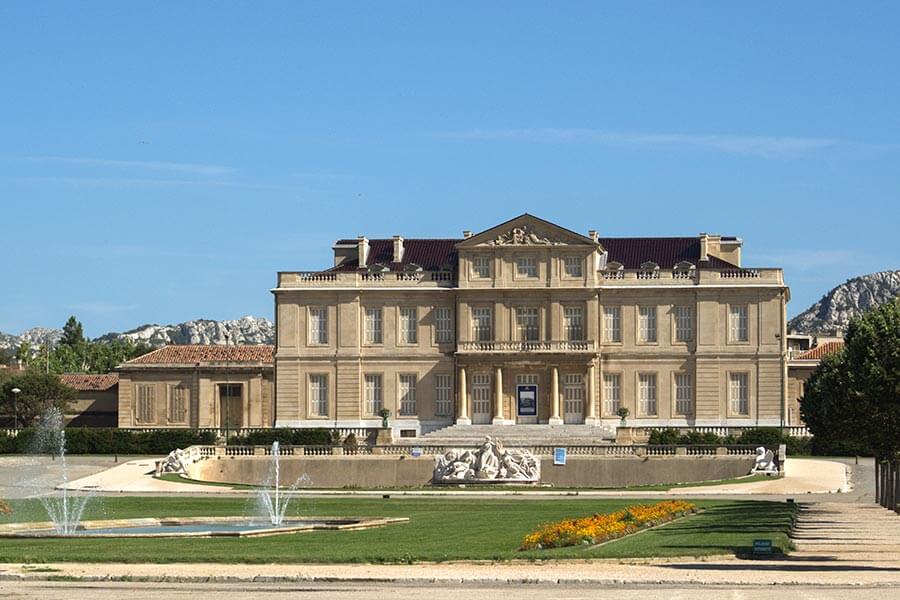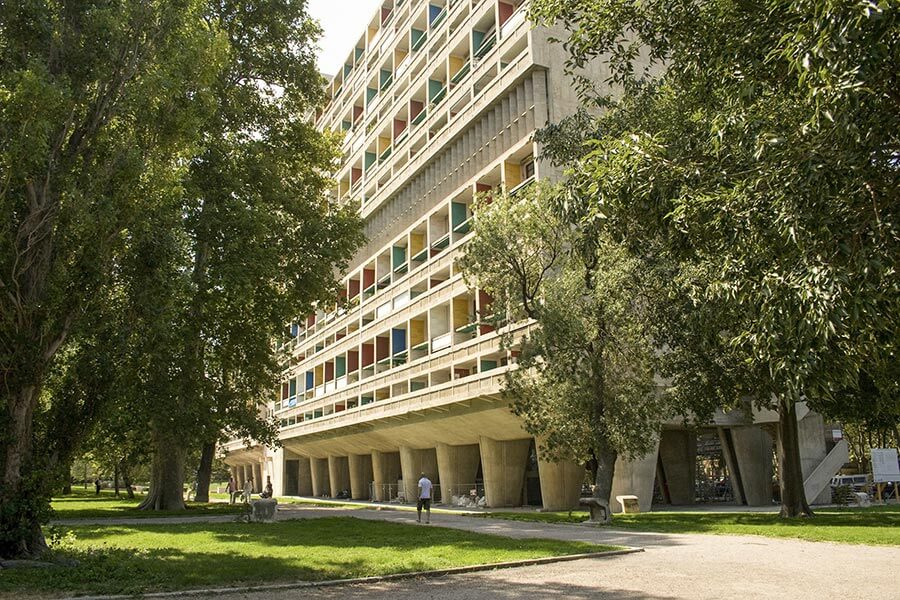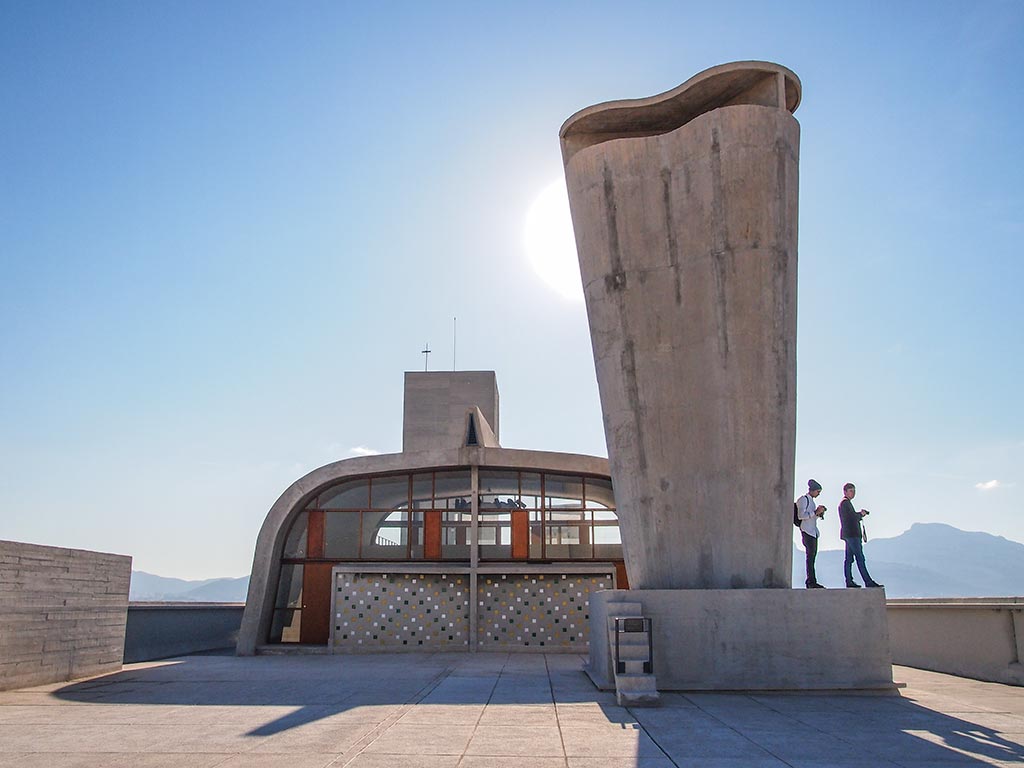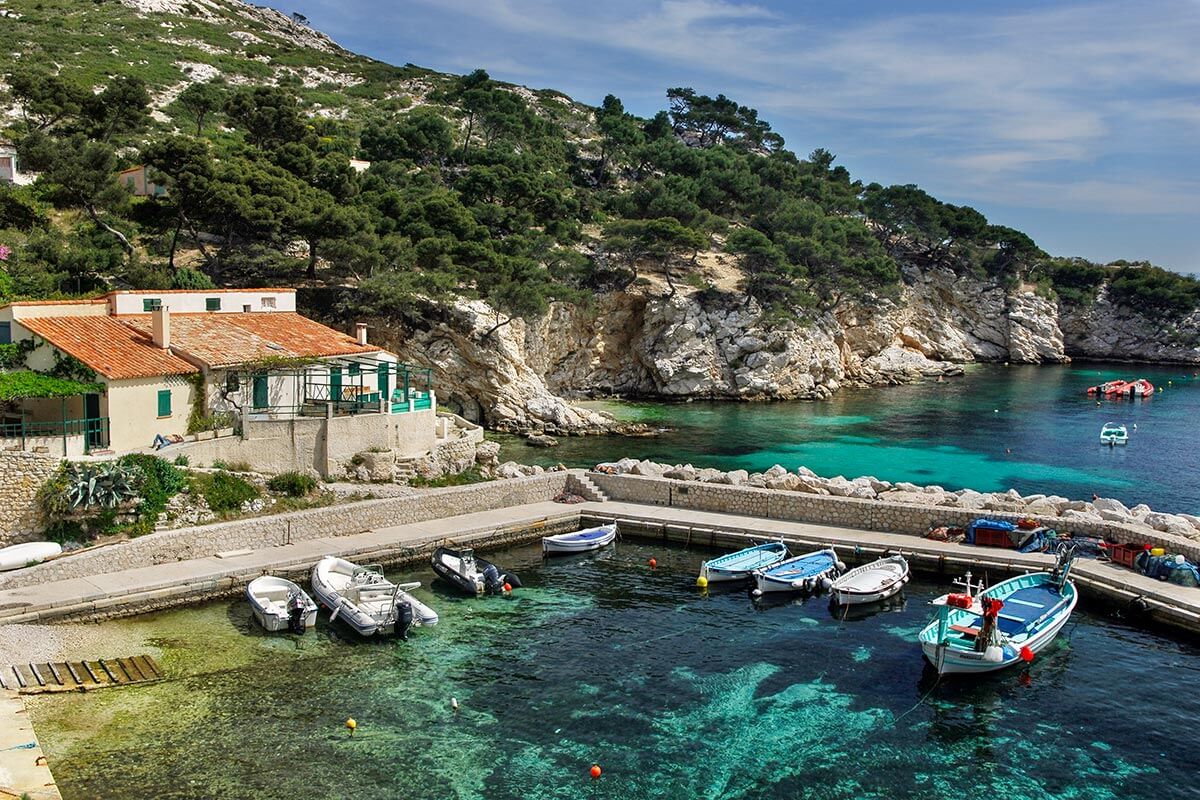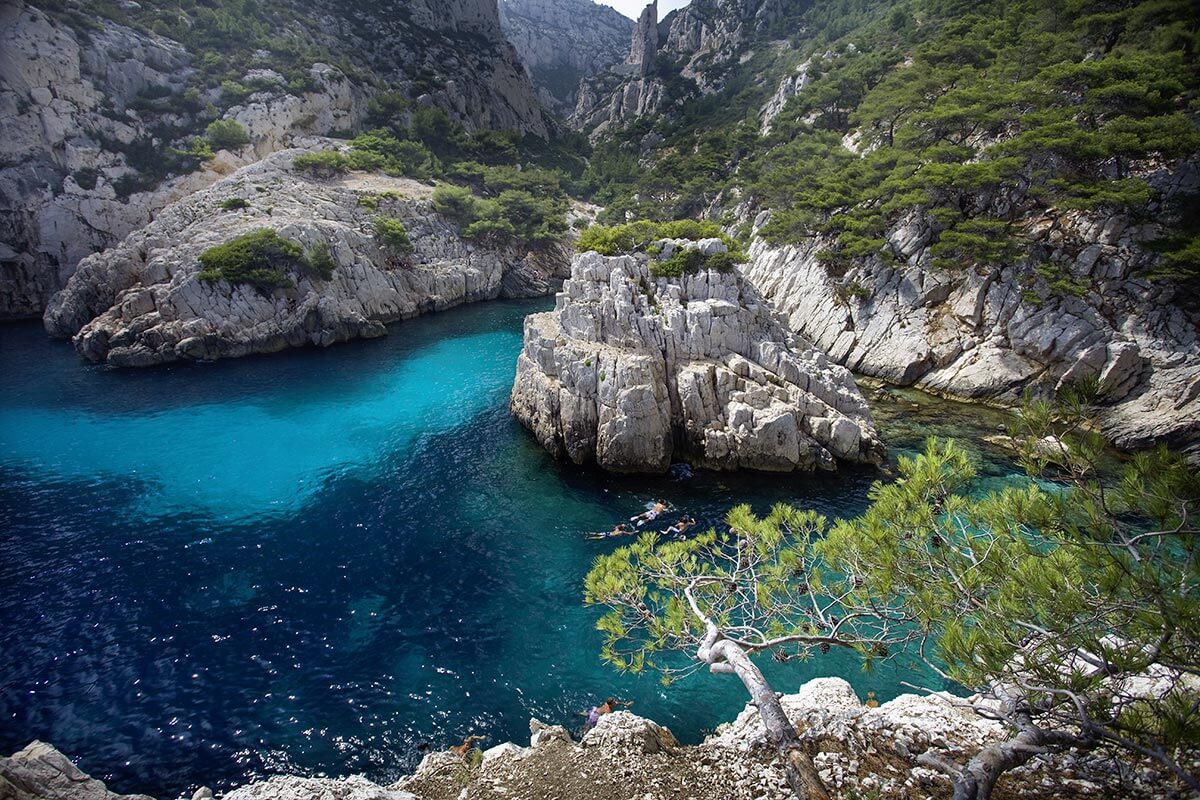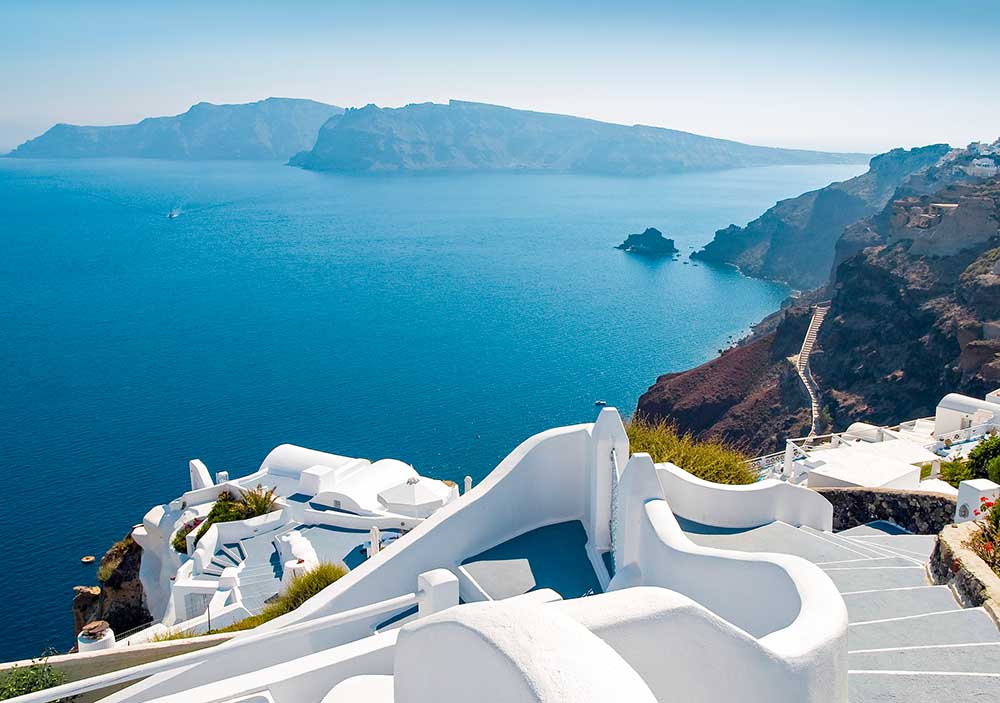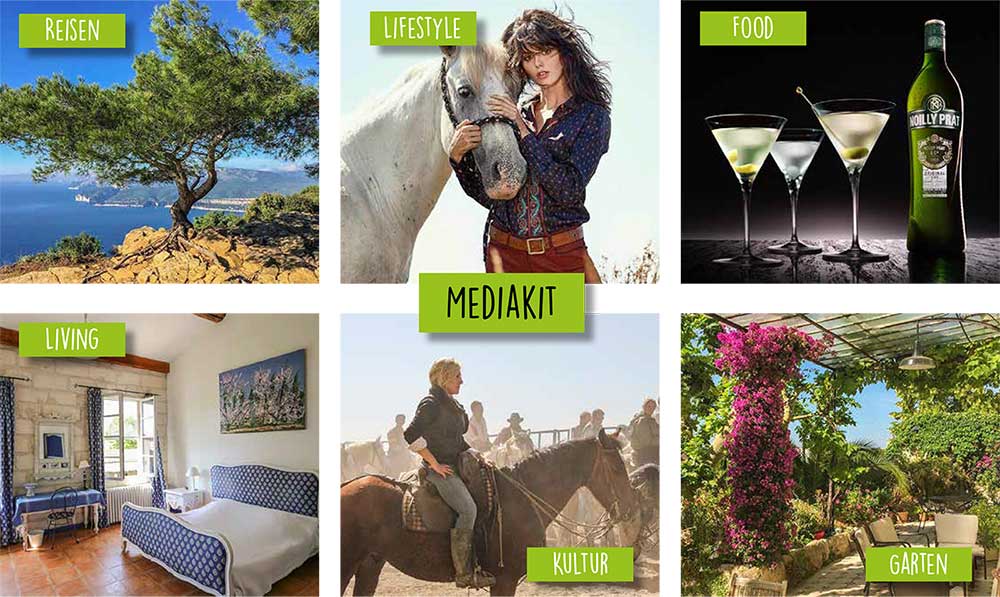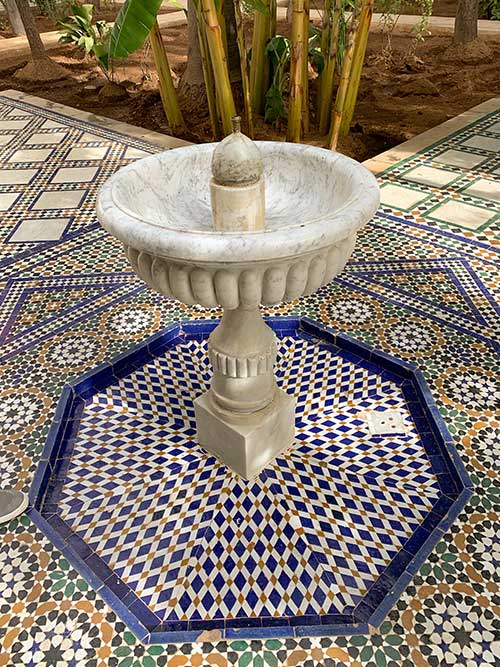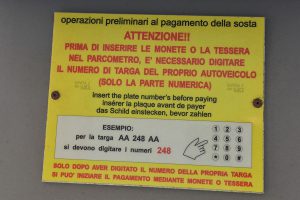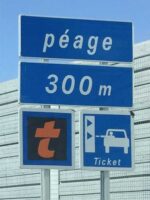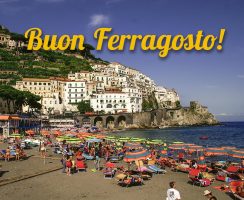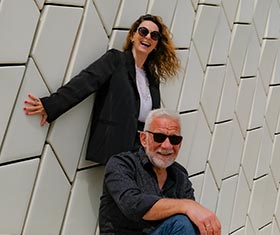Marseille as the oldest and second largest city in France is a fascinating Mediterranean port city, international metropolis and village idyll at the same time. Our travel tips on the top sights in Marseille that you should not miss!
We’ve ranked them for you here, depending on the amount of time you have. And you’ll find a few more tips on travel, costs, locations, etc. Updated January 2023!
Table of Content: Marseille sights at a glance:
- Vieux Port, the old port
- Basilica Notre Dame de la Garde
- Le Panier Quarter
- Vieille Charité
- The Canebière, the shopping street
- MUCEM and Fort St. Jean
- Cathedral, Cathédrale de la Major
- Chateau d’If
- Port des Vallon des Auffes
- Palais Longchamp
- Borély Castle and Park
- The Cité radieuse by Le Corbusier
- Cours Julien and street art
- Trip to the Calanques
Arrival by train
If you arrive by train, for example the TGV from Paris, you will arrive in the new, less beautiful part of the station. Go right out onto the forecourt and enjoy the view of the city, across to the church of Notre Dame de la Garde. Exactly in this direction of view lies the old port, the Vieux Port. In the underground car park the first half hour is free of charge if you are being picked up or if you want to visit the station by car.
Because the old train station with its wide station stairs with 104 steps down into the city is in itself also a sight to see!


Arrival by car
If you arrive by car, for example from the Marseille Provence Airport in Marignane follow the signs to the Vieux Port (not to the Portthat is the new port, there you will land at the docks). You pay the toll (péage) only after the Vieux Port. The best thing to do there is to find a parking garage. Around the port there are 7 parking garages, the Parking Q-Park Vieux Port / City Hall e.g. is on the northern side near the city hall, the Parking Q-Park Estienne d’Orves Marseille is on the south side. Parking fees in the parking garages are moderate. You will unfortunately have almost no chance to park anywhere on the street or in the narrow side streets!
The Office de Tourisme is located right at the harbor on the Canebière. There you can download the City Pass Marseille purchase, it costs from 27 euros per person for one day. It includes, for example, free access to museums, public transportation, guided walking tours and special offers for a shopping trip, performances, a free sample of the Four des Navettes, the famous local cookies and much more.
Tip: Take the red “Hop-on Hop-off” bus for 19 euros day ticket. It goes to all the important places of interest. A round trip without disembarking takes about 1.5 h. Starting point is the Vieux Port stop on the northern side in front of the City Hall.
1. Vieux Port, the old port
Without visiting the port you have not seen Marseille! Every morning just like in the old days, fishermen sell their fresh catch on light blue trays on the narrow side of the harbor at the Quai des Belges. Stroll around, sit down in one of the many restaurants, e.g. the Chez Roger on the northern side of the harbor and enjoy the view of the yachts, of Notre Dame de la Garde and the hustle and bustle of the people.
Tip: About in the middle of the port crosses a small ferry, Cesar (named after the movie Fanny, Marius and Cesarin which the ferry appears in the opening sequence), crosses the harbor. The crossing costs 50 cents and is worth each of them three times!
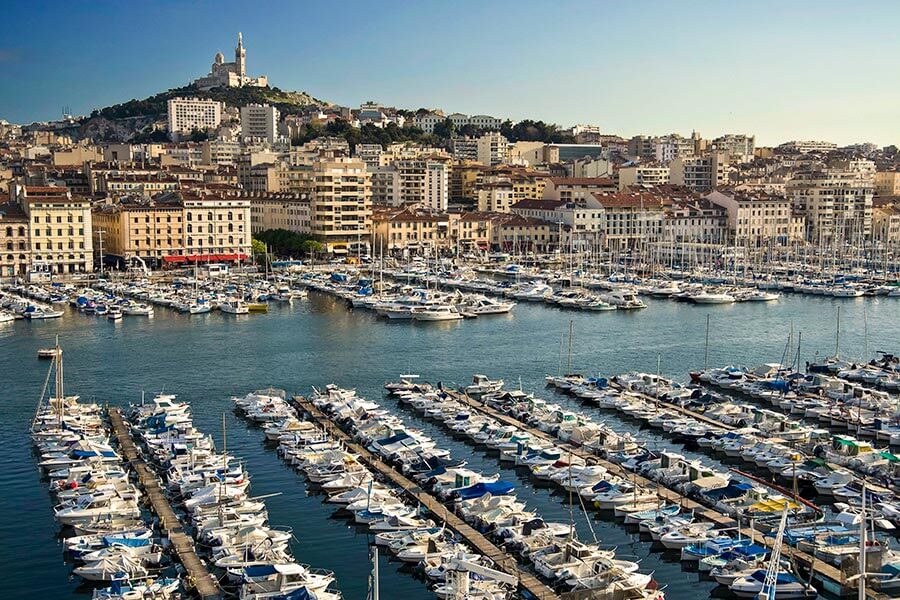

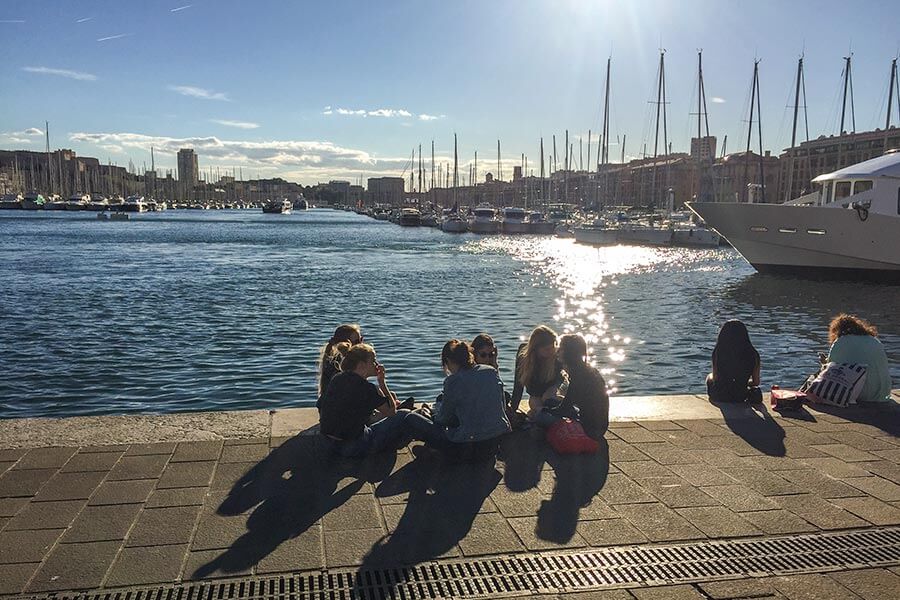
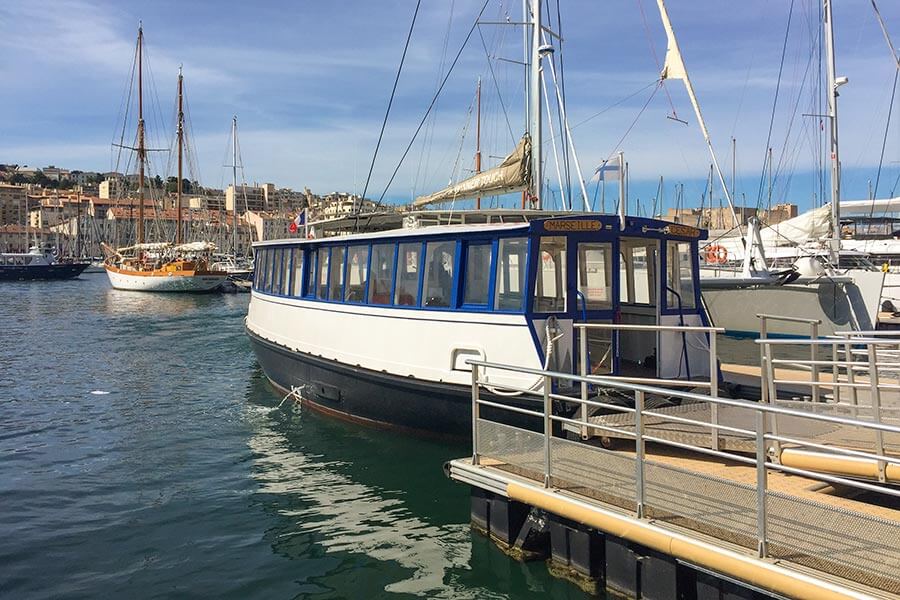
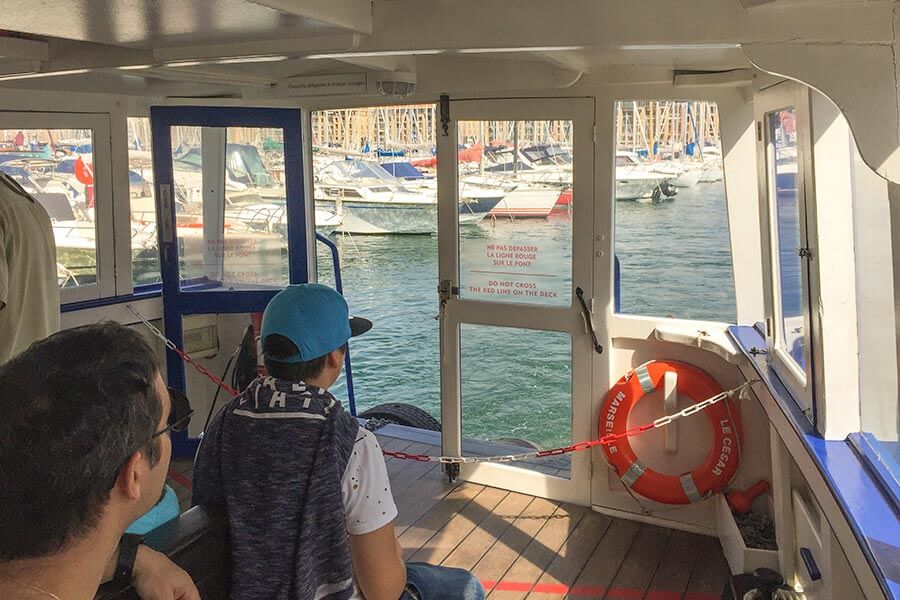
2. Basilica Notre Dame de la Garde
If you’re not just passing through, head up to the sanctuary of Notre Dame de la Gardepopularly known as La Bonne Mère – (by car, by bus no. 60 which leaves every 20 minutes, by hop-on hop-off bus or by tourist train). From up there you have a fantastic panoramic view over the whole of Marseille to the islands in front of Marseille. The church itself with its many seafaring devotional objects is also worth seeing. Next to the basilica you will also find a Café and a Bistro.
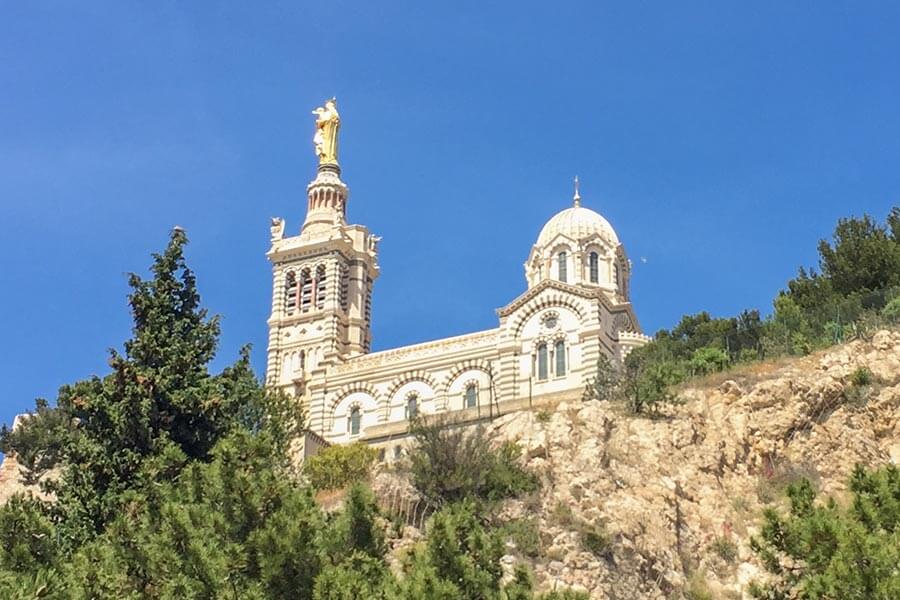
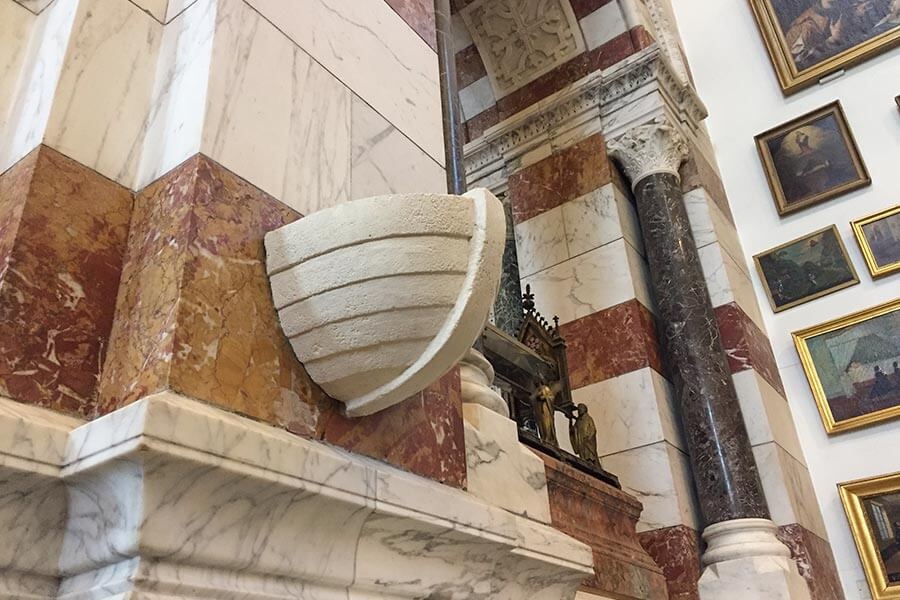
3. Le Panier quarter
Turn off at the harbor at the height of the town hall between the buildings from the 50s (the Germans blew up a part of the quarter in 1944, more about that and the Le Panier quarter here) and climb the hill to Le Panier district with its winding alleys, artists’ workshops and small stores. A break is worthwhile at the Place Lenche (this is where the Greeks founded the city of Massilia 2600 years ago) or on the Place de Moulinswhere the metropolis seems far away. In the northern part of the neighborhood, you’ll also find La Vieille Charité, our next point of interest.
4. Vieille Charité
The “Old Charité” in the Panier quarter from the 17th century. was a hospice for destitute sick and homeless people until the last century. Today it is used as a museum and cultural center. Among other things, it houses the archaeological collection of the Musée d’Archéologie Méditerranéenne with numerous Egyptian and Roman relics, and the Musée d’Arts Africains, Océaniens, Amérindiens. Time and again, changing exhibitions also take place. The building itself impresses with its three-story arcaded gallery, which encloses a rectangular courtyard and a Baroque chapel. Inside the building complex you will find a museum store and a nice café.
5. The Canebière, shopping mile
The Canebière is the shopping mile of Marseille. It stretches directly from the port far into eastern Marseille. Its name is derived from the Provençal word “canebe” (hemp), which recalls the rope makers who were resident here since the Middle Ages. The Canebière however, was not extended to the port until the end of the 18th century, when the Grand Arsenal was relocated. The grand buildings of the former pomp street were only built after this extension. Here you can shop extensively 😉
Tips GetYourGuide
6. MUCEM and Fort St. Jean
Since 2013, the area at the northern exit of the port has been completely transformed. The MUCEM, the Museum of European and Mediterranean Civilizations (Musée des civilisations de l’Europe et de la Méditerranée), is home to interesting temporary exhibitions. From the fascinating gray, open-worked block you could stroll from the open-air café over a steel bridge to the Fort St. Jean after the museum visit. In front of the MUCEM is the La Villa Méditerranée,a congress center with likewise changing exhibitions on topics of the Mediterranean region.
Tip: There is a Ferris wheel on the square in front of it since 2018 (before that it was right on the Quai des Belges). From the top you have a wonderful view of the harbor and the cruise ships and also of the huge ferries coming in from Algeria .
7. Cathedral, Cathédrale de la Major
The cathedral looks like a centuries-old church, but it was built in Neo-Byzantine style only from 1853 to 1894. It amazes with its spaciousness and many different attachments. In 1852, Napoleon III visited Marseille and, prompted by Bishop Charles Joseph Eugène de Mazenod, symbolically laid the foundation stone for the new building, which was erected on the site of a Romanesque church from the 11th century. . In order to gain space for this place, two western bays of the Romanesque church and part of the annexes were demolished and the rest was secured. Part of this old, Vielle Major called church is still standing and is currently being renovated.
Tip: The noble with lots of black and gold furnished restaurant Casa Pietra underneath the cathedral is a good place for an Aperó with a view of the sea and the docks.
8. Chateau d’If
The prison on the small island off the coast of Marseille If you surely know from the novel of Alexandre Dumas “The Count of Monte Cristo”. Ferries depart approximately every hour from the old port to the four islands of If, Pomègues, Ratonneau and Tiboulen. The boat trip of about half an hour is worth it!
9. Port of the Vallon des Auffes
This small, tranquil harbor is a traditional fishing port with about 50 fishing huts on both sides of the viaduct of the Corniche in the Endoume district. It takes its name from auffe(auffo in Provençal), a type of grass plant used to make ropes, mats and fishing nets. Here you can find some good restaurants.
On the sea side in front of it stands a 5 m high bronze statue, a woman with her arms raised with her back to the Mediterranean Sea. The monument stands for the dead persons of the army of the East and distant countries. It was inaugurated in 1927 and was listed as a historical monument on July 23, 2009.
Tip: The Bistrot Plage below the statue with beach loungers and bathing access is worthwhile for swimming and eating.
Search accommodation in Marseille & surroundings *
10. Palais Longchamp
The Palais Longchamp is located at the end of the Canebièreor rather the extension Boulevard de la Libération. It is actually a fountain monument in the style of historicism, a tribute to water in all its glory. The Palais marks the end of the Canal de Marseillewhich, from 1849 onwards, brought fresh water from the river Durance to Marseille. The arrival of the water was to be celebrated with a representative moated castle, but it was not realized until 1869. The Palais Longchamp is considered one of the most important architectural works of the Second Empire in Marseille.
Since then, the two side wings have housed two highly respected Marseille museums: the Museum of Fine Arts (Musée des Beaux-Arts) and the Museum of Natural History (Muséum d’histoire naturelle). Children, by the way, have great fun inside the Palais Longchamp. See also Marseille sights with children
Tip: Afterwards to the sweet cafe-bistro Belleville/mer around the corner.
Location of the Palais Longchamp in Google Maps (address Chateau d’Eau)
11. Borély Castle and Park
The classicistic, in Wikipedia erroneously described as a baroque château Château Borély is an outstanding example of the southern French building type of the noble country residence of the bastide. The large associated park is next to the Corniche the joggers’ paradise and a popular family destination for the people of Marseille. After extensive renovations, the castle has been open since 2013 as a museum (Musée Borély) dedicated to arts and crafts, faience and costume history. In the impressive courtyard you will also find a café and Bistro.
12. The Cité radieuse by Le Corbusier
Visit a skyscraper? Yes! For this “living machine,” as the Swiss architect Le Corbusier called it, has little in common with today’s high-rise apartment blocks. Built between 1947 and 1951, the imposing building (165 m long, 24 m wide and 56 m high) is reminiscent of a cruise ship moored in a park. You can take the elevator to the top of the “deck” without registration. There you can enjoy a magnificent view of the mountains of the Calanquesthe sea and Marseille and the famous Orange Velodrome football stadium. On the deck there is a paddling pool for children, play areas and a wind-protected stage for open-air performances, as well as a huge concrete cinema screen. On the top floor there is also a cafe and a shopping street.
You can also book guided tours, during which you can also visit some model apartments, some of which are over two floors.
Le Corbusier was misunderstood for a long time with his concept of the living machine. He himself said, “a car is a machine for driving, an airplane is a machine for flying, so a house is a machine for living!”
When you visit the Cité radieuse (translated “radiant settlement”), you understand what he meant. For the time, the apartments were enormously comfortable, bright and modern. We, at least, were impressed!
13. Cours Julien and Street Art
From 1860 to 1972, this square was the central fruit and vegetable market, of Marseille, Le Marché Central. In the 1980s it was completely remodeled. Antique stores and later restaurants, club and cultural venues moved into the premises of the former wholesalers. The area is now considered the cool and trendy neighborhood of artists, “bobos” and musicians of Marseille. You’ll find numerous sidewalk cafes, art stores, children’s playgrounds and street art in the pedestrian zones. Graffiti is not only tolerated here, but even officially allowed.


14. Excursion to the Calanques
A part of the Calanques still belongs to the urban area of Marseille. They are one of the most beautiful and impressive natural phenomena of the Mediterranean. White to rust red limestone, evergreen Aleppo pines, in between flowering rosemary bushes in the “macchia” and again and again views of the crystal clear, turquoise blue sea between the fjords. Here you can swim, hike, dive or visit the bays by boat. More about the Calanques
If you want to experience what it feels like to live in Marseille, we recommend this book published in 2022:
View of the sea, ass on ice:
How I quit my job, moved to the South of France and learned to be afraid
Worth reading, very amusing book by Brenda Stromaier about her dream to buy an apartment in Marseille, about trying to furnish it during the pandemic and about the Marseille winter without heating …
A new, very nice and informative travel guide about Marseille from the Michael Müller publishing house can also be found in our Store at the book tips France
And another tip: exploring the city by bike is becoming increasingly popular. Now that many traffic-calmed zones have also been established, it’s much safer than it used to be and even more fun!
New attractions in Marseille 2023:
- In 2021, the Maison du Monde Hotel had reopened in Marseille. The hotel with 62 rooms and suites, furnished in 5 different styles, is located on the old port, opposite the pier for the islands of Frioul and If. Maison duMonde is an online store for exclusive Mediterranean furniture. (see also our insider tips Marseille) Now there is the Maisons du Monde Hôtel & Suites with 16 apartments in addition to the hotel. Just a short walk from the hotel and a stone’s throw from the Old Port are the Maisons du Monde apartment suites, which opened in January 2023. The idea is simple: comfortable, functional apartments with kitchen and living room, in a 100% Maisons du Monde decor to feel like home…. but better! Ideal for a leisure or business stay.
- Marseille underwater museum
The MSM has installed its first submerged works. This “multi-artist” installation of 10 monumental works you will find in front of the beach of Catalans and is 5 meters deep. - “Green” tours for groups
Outdoor tours, e.g. the “Treille Village” and the hills of Marcel Pagnol, a short walk in the city between historical and natural heritage, boat trips (sailboat, catamaran, electric speedboat…) to enjoy the Calanques National Park… In addition, virtual tours are also offered. More information on the Website of the Marseille Tourist Office - A museum for the Pastis
The House of Pernod-Ricard opened a multipurpose space, The Mx, in June 2021, dedicated to the world’s most famous aniseed drink (see also our Insider Tips Marseille). And here more about Pastis, the cult drink of the French …
Siegbert Mattheis
Would you like to share this article?
[DISPLAY_ULTIMATE_SOCIAL_ICONS]

